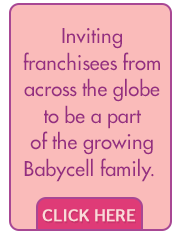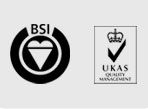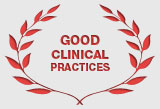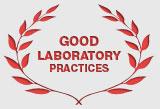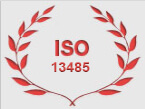FAQ's
About Stem Cells
Stem cell research is one of the most fascinating areas of contemporary biology, but, as with many expanding fields of scientific inquiry, research on stem cells raises scientific questions as rapidly as it generates new discoveries.
Studying stem cells will provide a better understanding of normal cell development and perhaps help to correct the errors that cause conditions like cancer and birth defects.
Scientists in many laboratories are trying to find better ways to grow large quantities of adult stem cells in cell culture technique. A starting population of a few thousand stem cells that proliferates for many months in the laboratory can yield millions of cells. Scientists are also trying to manipulate stem cells to generate specific cell types so they can be used to treat injury or disease.
What is stem cell therapy?
A stem cell therapy is a treatment that uses stem cells to replace, repair or regenerate a patient's cells or tissues that are damaged. The stem cells might be put into the blood or transplanted into the damaged tissue directly or even recruited from the patient's own tissues for self-repair.
What are the potential uses of human stem cells and the obstacles that must be overcome before these potential uses will be realized?
Given their unique regenerative abilities, stem cells offer new potentials in cell based therapies also referred to as regenerative medicine. Some examples of potential treatments include regenerating bone using cells derived from bone marrow stroma, developing insulin-producing cells for type 1 diabetes and repairing damaged heart muscle following a heart attack with cardiac muscle cells.
Where are adult stem cells found and what do they normally do?
Adult stem cells have been identified in many organs and tissues. They are thought to reside in a specific area of each tissue (called a "stem cell niche").
Stem cells may remain quiescent (non-dividing) for long periods of time until they are activated by a normal need for more cells to maintain tissues or by disease or tissue injury.
| Bone marrow Umbilical cord tissue Umbilical cord blood Peripheral blood |
Placenta Blood vessels Brain |
Skeletal muscle Skin Teeth Heart |
Gut Liver Ovarian epithelium Testis |
What are hematopoietic stem cells?
Hematopoietic stem cells (HSCs) are stem cells that give rise to all the blood cell types namely white blood cells (WBC), red blood cells and platelets.
Why Umbilical Cord Blood Banking?
Umbilical cord is the connecting cord between the mother & the baby when the baby is in the womb. It carries oxygen & nutrients to the baby. Blood left in the umbilical cord & placenta after the baby is born is known as the "Umbilical Cord Blood".
Why bank cord blood?
Cord blood is a rich source of hematopoietic stem cells (HSC). Current research demonstrates presence of stem cells with a potential to differentiate to heart, pancreas, nervous tissues etc.
Once in a lifetime opportunity?
Umbilical cord blood needs to be collected in the initial few minutes after the baby is born. Once the umbilical cord is discarded, you lose that chance permanently.
Preserving cord blood stem cells will ensure a guaranteed source of perfectly matched cells for your baby in the event where a life threatening illness develops and the cells need to be used to combat the disease. Additionally, cord blood of one child may be useful for the child's sibling.
What is the history of cord blood transplantation?
Umbilical cord blood stem cells were first used for transplantation for a patient of Fanconi's Anemia in France in 1988. Since then over 8000 successful cord blood transplantations have been done for a variety of blood borne disorders all over the world.
How large is private cord blood banking industry?
As of today over one million cord blood units are already stored in different private banks all over the world.
What are the advantages of Cord blood Stem Cells Transplantation over Bone Marrow Stem Cells Transplantations?
Stem cells in 100-150 ml of cord Blood = Stem cells in 500-1000 ml of Bone Marrow
Cord blood transplant patients may have a higher survival rate, a higher quality of life after transplant and less frequent hospitalization due to fewer complications such as Graft vs. Host Disease (GHVD). This makes the overall cost of umbilical cord blood transplantation less than traditional bone marrow transplantation.
| Cord Blood Transplant | Bone Marrow Transplant | |
| Cost | Only transplant fees | High cost of finding donor + Transplantation costs |
| Transplant | Immediate transplant upon physician's view |
Available only upon finding suitable donor |
| Collection | Collected from umbilical cord after baby is born (no stress, no pain to mother or baby) |
Stressful process including general anesthesia, hospitalization etc. |
| Rejection | Less frequency of graft vs. host disease |
More frequent and more severe complication of graft vs host disease |
| HLA type (Histocompatibility testing) |
Transplant possible even with 66% HLA matching. |
Transplant possible only with 100% HLA matching. |
What you need to know before Cord Blood Banking?
You will be made aware of the concept of stem cell banking by your own doctor. After which the relationship executive of Babycell would counsel you and your family about the benefits of preserving your baby's umbilical cord blood with Babycell.
What options are available for my baby's cord blood?
You can opt for any of the three options available to you:
- Preserve your baby's cord blood with Babycell private banking unit and can retrieve it back if and when the need arises.
- Donate your baby's cord blood to Babycell for research purposes. In this situation you will not bear any expenses and you would not have any claim on the cord blood in future in case a need arises.
- You can prefer to discard the cord blood as a biomedical waste, but you will miss this precious opportunity.
Babycell registration is a simple process wherein you would be required to fill in some personal details in a registration form and a client agreement form.
How early before delivery should I register with Babycell?
As early as possible. However you can opt for banking anytime upto 1 month of your expected date of delivery.
When do I receive my collection kit?
Once you are enrolled and have signed the client agreement form, you shall receive the collection kit box within 7-10 days of receipt of your agreement form at the head office.
What if I decide upon this procedure a few days before delivery?
You will need to notify and enroll with us atleast 48 hours prior to your expected delivery time.
What should I do upon receiving the kit box?
Upon receiving your kit box:
- The collection kit box contains a checklist of the items provided. Kindly confirm that all the contents are present and that none is damaged.
- Place the gel packs in the ice compartment of the refrigerator atleast 24 hours prior to the expected delivery time.
- Do not disturb any other kit contents and do not open the packaging of other packed material.
- While travelling to the hospital, ensure that gel packs are taken with you.
- At the hospital hand over the collection kit box to the paramedic or doctor and instruct the personnel to check the items of the kit box. If delivery is anticipated to be delayed, instruct the hospital staff to place the two gel packs in the ice compartment of their refrigerator.
- Once collection is over, kindly ensure that the doctor and the collection personnel fill up the pink form provided in the kit box.
Babycell & You
Who collects the cord blood after the delivery of the child?
Paramedics including nurses, trained at Babycell specifically for cord blood collection are in attendance during your child's delivery. They are the ones who collect the umbilical cord blood after the cord has been isolated from the child & the mother.
Is cord blood collection complicated?
No, collection of cord blood is a very simple procedure and your doctor should be easily able to perform the same. In case of any doubt, kindly contact our toll free number and our personnel will be happy to assist your doctor or their nursing staff explaining the collection procedure.
When is the Cord Blood specimen collected?
The collection process is carried out after delivery when the cord has been separated from your newborn. In no way does it interfere with the birth of your baby. Our trained paramedic or nurse collects the cord blood utilizing a sterile kit provided by Babycell.
How safe is this for my baby and me? Will either of us feel any pain or discomfort?
The first priority is the care and well being of the baby & the mother. Cord blood collection is very safe because the blood is collected after the cord has been separated from your baby. Neither you nor your baby will feel anything since this procedure is done only after the cord has been detached.
In case of twins what happens?
In case of twins cord blood volume may be low. Also HLA group of the siblings might not be 100% match in case of non identical twins. It is advisable that both the babies cord blood be preserved for potential future use.
For twin collection, processing charges for second baby would not be charged and only storage charges will be charged.
After Collection:
How do I transport the collected cord blood to Babycell?
Once the cord blood is collected, it is placed properly in the kit box provided. Place the two gel packs in the box. Seal the box properly and hand it over to our logistics partner to be dispatched to the laboratory.
How soon after the blood is collected do you need to process the cord blood?
It is preferable that cord blood unit reach the lab within 36-48 hrs after the collection.
Myths about Stem Cell Banking
Due to unawareness many people lose once in a lifetime opportunity to bio-insure their child's future.
We hope that parents understand the concept fully and make an informed decision to store the stem cells of their baby.
We have discussed few common misconceptions here.
In case you have any more doubts kindly contact us and we will be happy to help you.
Doctors may not treat the child with his or her own cord blood because it would contain the disease.
Autologus stem cell transplants are performed routinely in treatment of life threatening diseases like Leukemia, Lymphoma, Krabbe's Disease, Sickle Cell Anemia, Osteopetrosis, Cardiovascular disease etc.
Research from the Journal of Clinical Oncology reports that even with early-onset disease (within twelve months of birth), the child's stem cells are still recommended for use in transplantation. Autologous cord blood stem cells have many advantages as a transplant source, including no risk of graft vs. host disease (GVHD-a leading cause of death for transplant patients), immediate availability and low risk of the cells being contaminated with disease. They have been as successful as allogenic (from donors) transplants.
My family doesn't have a history of cancer, chances of my family needs a transfer are low, so I don't have to bank the stem cells.
Causes of most of the cancers remain still unknown. Modern lifestyles hazards have made all of us prone to this deadly disease. The only way to conquer this unpredictability is to secure your child's stem cells.
According to recent data based on the ABT Associates Clinical Trials 2004 cord blood study, it could be as low as 1 in 27 for the average population (though not all patients with a disease treatable with cord blood stem cells qualify for transplant). Further studies show that given the current indications for hematopoietic stem cell transplantation (HCT), the lifetime likelihood that a child will someday need cord blood stem cells is estimated at 1 in 400, with odds that a child or family member may benefit from banked cord blood at 1 in 200.
* Pasquini MC, Logan BR, Verter F, Horowitz MM, Nietfeld JJ. The Likelihood of Hematopoietic Stem Cell Transplantation (HCT) in the United States: Implications for Umbilical Cord Blood Storage. Blood 2005; 106(11): 1330
Due to the progressive science of regenerative medicine, the odds of personal use could increase greatly.
There are public banks ready to provide stem cells why should I bank with a private bank?
Once donated, the cord blood units are put into a public pool. There is no guarantee that the donated stem cells will be available to the same donor at later stage if the donor needs it. It is time as well as money consuming. Also there is no guarantee that you will get the right donor when needed.
In private cord blood bank like Babycell the samples are exclusively maintained for your child. Your child's cord blood provided 100 % match for its transplantation so no need to search for a donor and it is available when ever required.
"Cord blood collection takes important blood away from my baby."
Umbilical cord of a baby was treated as a bio waste for centuries when the world was unaware of the potential of umbilical cord blood. It is only in past couple of decades that we started collecting and preserving these magical stem cells. These stem cells are collected after the cord is clamped, cut and separated from baby. So when we collect cord blood it is no ways connected to baby and hence completely safe for mother as well as the baby.
"The cord blood stem cells may not remain viable after long-term storage."
The stem cells are stored at - 196 °c in liquid nitrogen. This undisturbed state of cells is called as suspended animation. Research shows that such cryo preserved cells need not have an expiry date as they show the same viability and biological activity when used for transplantation purpose. Ultimate length of cryopreservation storage time, continuing to yield a viable stem cell has not been determined. This is because stem cell cryopreservation is a newer science or procedure. We know that stem cells can be successfully cryopreserved for at least 20 years. Babycell provides with two conjoint compartments in one freezing blood bag, these compartments can be easily separated for future use.
"Future uses for stem cell are limited."
World over stem cell therapy is considered as one of the strong pillar of medicine along with pharmaceutical and surgery treatments. Over 8000 transplants are done using cord blood stem cells.
Scientist have successfully grown heart cells, lung cells and recently a human sperm using the stem cells, Click Here to know more.
Governments are trying to encourage stem cell research because of its promising future. On 9th march 2009 Obama government lifted the ban on funding of stem cell research, Click Here to know more.
Considering the tremendous progress stem cell therapy has made in treatment of complicated diseases like type one diabetes and Alzheimer's. We can surely say that stem cell is bright and has strength to cure the patient from many serious illnesses.
Cord blood banking is a very costly process.
Babycell offers you the industry low prices with world-class quality.
We offer to collect and preserve the cord blood and/or cord tissue at very affordable prices.
Click here to know more
It is a great investment considering finding a bone marrow donor and the BM transplant is a much costly procedure.
With progress many families now store their stem cells to help them take advantage of the potential future health-benefits. So if you believe in progress, if you believe that science will advance, if you have confidence in the future, then you should save your baby's stem cells through cord blood banking.
Source http://www.cordblood.com/cord_blood_banking_with_cbr/common_misconceptions/index.asp



















